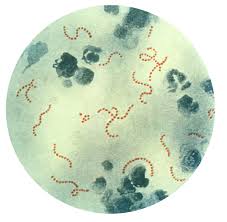CovS modulates the antimicrobial susceptibility of Streptococcus pyogenes
Keywords:
two-component signal transduction system; CovS; penicillinesAbstract
In Streptococcus pyogenes, the relationship between the major virulent regulatory factors, CovR/S, Mga, and Rgg, and antimicrobial susceptibility has not been elucidated till date. This study aimed to determine whether the inactivation of each regulatory factor affects antimicrobial susceptibility. We used covS, mga, and rgg knockout mutants from 3 different emm1 Streptococcus pyogenes strains with respect to the CovS amino acid sequence and investigated their susceptibility pattern to 29 antibiotics. Further, we investigated antimicrobial susceptibility of other 8 emm1 clinical isolates. The antibiotic susceptibility, particularly the susceptibility to penicillins, of the covS mutant strains was greater than that of the wild-type strains and the mga and rgg mutants. The covS complemented strain almost restored the susceptibility. The susceptibility to beta lactam in 1 strain with 2 amino acid sequence differences in CovS was higher than that of the other 2 strains with none or 1 amino acid sequence difference. Eight clinical isolates were classified into 2 groups based on antimicrobial susceptibility which correlate CovS amino acid sequence. The two-component signal transduction sensor protein CovS affects the susceptibility to antibiotics in Streptococcus pyogenes via the amino acid difference of CovS sequence.
References
Biswas, I., Drake, I., Erkina, D., Biswas, S., 2008. Involvement of sensor kinases in the stress tolerance response of Streptococcus mutans. J. Bacteriol., 190, 68-77.
Chaussee, M.A., McDowell, E.J., Rieck, L.D., Callegari, E.A., Chaussee, E.A., 2006. Proteomic analysis of a penicillin-tolerant rgg mutant strain of Streptococcus pyogenes. J. Antimicrob. Chemother., 58, 752-759.
Clinical laboratory Standards Institute., 2006. Performance standards for antimicrobial disk susceptibility tests; Approved standard-ninth edition”, CLSI document M2-A9. 26, 1.
Graham, M.R., Smoot, L.M., Migliaccio, C.A., Virtaneva, K., Sturdevant, D.E., Porcella, S.F., Federle, M.J., Adams, G.J., Scott, J.R. Musser, J.M., 2002. Virulence control in group A Streptococcus by a two-component gene regulatory system: global expression profiling and in vivo infection modelling. Proc. Natl. Acad. Sci., U S A., 99, 13855-13860.
Hasegawa, T., Okamoto, A., Kamimura, T., Tatsuno, I., Hashikawa, S.N., Yabutani, M., Matsumoto, M., Yamada, K., Isaka, M., Minami, M., Ohta, M., 2010. Detection of invasive protein profile of Streptococcus pyogenes M1 strains from pharyngitis patients. APMIS., 118, 167-178.
Kreikemeyer, B., McIver, K.S., Podbielski, A., 2003. Virulence factor regulation and regulatory networks in Streptococcus pyogenes and their impact on pathogen-host interactions. Trends. Microbiol., 11, 224-232.
Kuroda, M., Kuroda, H., Oshima, T., Takeuchi, F., Mori, H., Hiramatsu, K., 2003. Two-component system VraSR positively modulates the regulation of cell-wall biosynthesis pathway in Staphylococcus aureus. Mol. Microbiol., 49, 807-821.
Lyon, W.R., Gibson, C.M., Caparon, M.G., 1998. A role for trigger factor and an rgg-like regulator in the transcription, secretion and processing of the cysteine proteinase of Streptococcus pyogenes. EMBO J., 17, 6263-6275.
Mascher, T., Zimmer, S.L., Smith, T.A., Helmann, J.D., 2004. Antibiotic-inducible promoter regulated by the cell envelope stress-sensing two-component system LiaRS of Bacillus subtilis. Antimicrob Agents Chemother., 48, 2888-2896.
McIver, K.S., Scott, J.R., 1997. Role of mga in growth phase regulation of virulence genes of the group A streptococcus. J. Bacteriol., 179, 5178-5187.
Sawai, J., Hasegawa, T., Kamimura, T., Okamoto, A., Ohmori, D., Nosaka, N., Yamada, K., Torii, K., Ohta, M., 2007. Growth phase-dependent effect of clindamycin on production of exoproteins by Streptococcus pyogenes. Antimicrob. Agents. Chemother., 51, 461-467.
Shelburne, S.A. 3rd., Sumby, P., Sitkiewicz, I., Granville, C., DeLeo, F.R., J.M. Musser, J.M., 2005. Central role of a bacterial two-component gene regulatory system of previously unknown function in pathogen persistence in human saliva. Proc. Natl. Acad. Sci., U S A., 102, 16037-16042.
Tart, A.H., Walker, M.J., Musser, J.M., 2007. New understanding of the group A Streptococcus pathogenesis cycle. Trends. Microbiol., 15, 318-325.
Tatsuno, I., Sawai, J., Okamoto, A., Matsumoto, M., Minami, M., Isaka, M., Ohta, M., Hasegawa, T., 2007. Characterization of the NAD-glycohydrolase in streptococcal strains. Microbiol., 153, 4253-4260.
Tatsuno, I., Okada, R., Zhang, Y., Isaka, M., Hasegawa, T., 2013. Partial loss of CovS function in Streptococcus pyogenes causes severe invasive disease. BMC Res. Notes., 6, 126.

Published
How to Cite
Issue
Section
Copyright (c) 2014 M. Minami, S. Torii, M. Ohta

This work is licensed under a Creative Commons Attribution-NonCommercial-NoDerivatives 4.0 International License.



